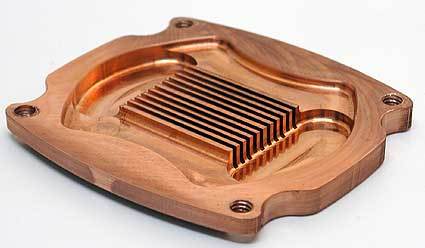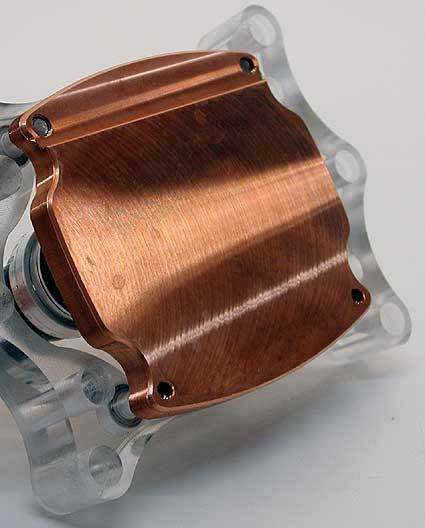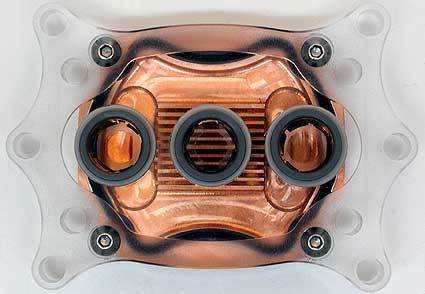7 Hot New Water Cooling Systems Tested
Asetek WaterChill: Installation, Continued
To fill the water cooling kit, the ATX mains power supply must be switched on. Asetek provides a special cable for this, but unfortunately it does not have wire end ferrules or is not at least tin-plated. The pins 13 and 14 are supposed to be by-passed for this, but it is very difficult to see on the diagram in the manual, although it is written on most of the ATX plugs. With a bit of gentle handling, the mains power supply can then be switched on without any problems.
The radiator is mounted with the aid of screws on the housing. The pump is attached to the housing with suction cups. This solution is not ideal, as the suction cups often do not stay on in aluminum housings. Alternatively, the pump can also be screwed on, but then holes must be drilled in the housing.
Installation of the Antarctica cooler is virtually the same. Only the two hoses for the Y adapter have to be connected in addition.
Copper block of the Antarctica cooler
The surface of the CPU cooler is polished and guarantees good heat conduction.
The cooler looks rather strange with the three hose connections.
Cooling Capacity: Good Performance
Get Tom's Hardware's best news and in-depth reviews, straight to your inbox.
The Waterchill can be used in two different modes: either with 7 or 12 V; selectable via a jumper. Thus, you can decide yourself whether cooling power or minimal operating noise is important.
Control unit for pump and radiator fan. On the right, the jumper for switching between 7 and 12 volts.
The Waterchill also performs well with the standard cooler and 7 V. With 0.33 K/W, the thermal resistance is low. By increasing the voltage to 12 V, a marginal improvement (0.32 K/W) is achieved, but the higher noise level is not justified. On the other hand, considerably improved cooling performance is attained with the Antarctica cooler. Thus, the Waterchill reaches a value of 0.25 K/W. Even here the increase in the fan voltage only brings about minimal improvements. The noise level of the cooling kit is 53 dB(A) with 12 volts and a quiet 44 dB(A) with 7 volts.
Current page: Asetek WaterChill: Installation, Continued
Prev Page Asetek WaterChill: Installation, Continued Next Page Innovatek Premium XXS: Premium Class


